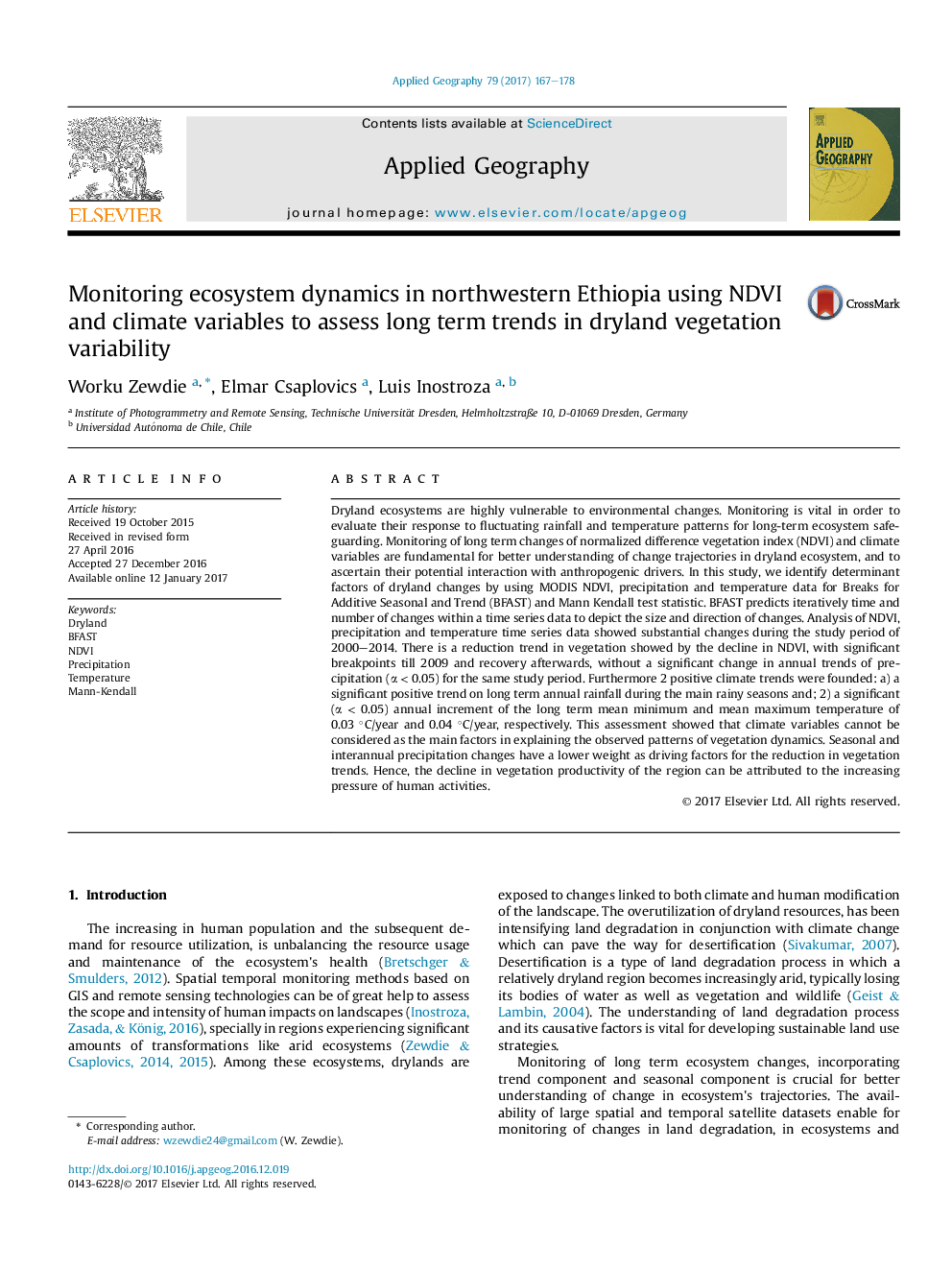| کد مقاله | کد نشریه | سال انتشار | مقاله انگلیسی | نسخه تمام متن |
|---|---|---|---|---|
| 6458437 | 1421038 | 2017 | 12 صفحه PDF | دانلود رایگان |

- Existence of seasonal breaks in NDVI indicating changes in phenology resulted from land use changes.
- Lower dependency of vegetation change on the long term precipitation changes.
- Spatial NDVI changes positively correlated to human activities.
- Degradation of woodlands has impacts on biodiversity and land condition.
Dryland ecosystems are highly vulnerable to environmental changes. Monitoring is vital in order to evaluate their response to fluctuating rainfall and temperature patterns for long-term ecosystem safeguarding. Monitoring of long term changes of normalized difference vegetation index (NDVI) and climate variables are fundamental for better understanding of change trajectories in dryland ecosystem, and to ascertain their potential interaction with anthropogenic drivers. In this study, we identify determinant factors of dryland changes by using MODIS NDVI, precipitation and temperature data for Breaks for Additive Seasonal and Trend (BFAST) and Mann Kendall test statistic. BFAST predicts iteratively time and number of changes within a time series data to depict the size and direction of changes. Analysis of NDVI, precipitation and temperature time series data showed substantial changes during the study period of 2000-2014. There is a reduction trend in vegetation showed by the decline in NDVI, with significant breakpoints till 2009 and recovery afterwards, without a significant change in annual trends of precipitation (α < 0.05) for the same study period. Furthermore 2 positive climate trends were founded: a) a significant positive trend on long term annual rainfall during the main rainy seasons and; 2) a significant (α < 0.05) annual increment of the long term mean minimum and mean maximum temperature of 0.03 °C/year and 0.04 °C/year, respectively. This assessment showed that climate variables cannot be considered as the main factors in explaining the observed patterns of vegetation dynamics. Seasonal and interannual precipitation changes have a lower weight as driving factors for the reduction in vegetation trends. Hence, the decline in vegetation productivity of the region can be attributed to the increasing pressure of human activities.
Journal: Applied Geography - Volume 79, February 2017, Pages 167-178